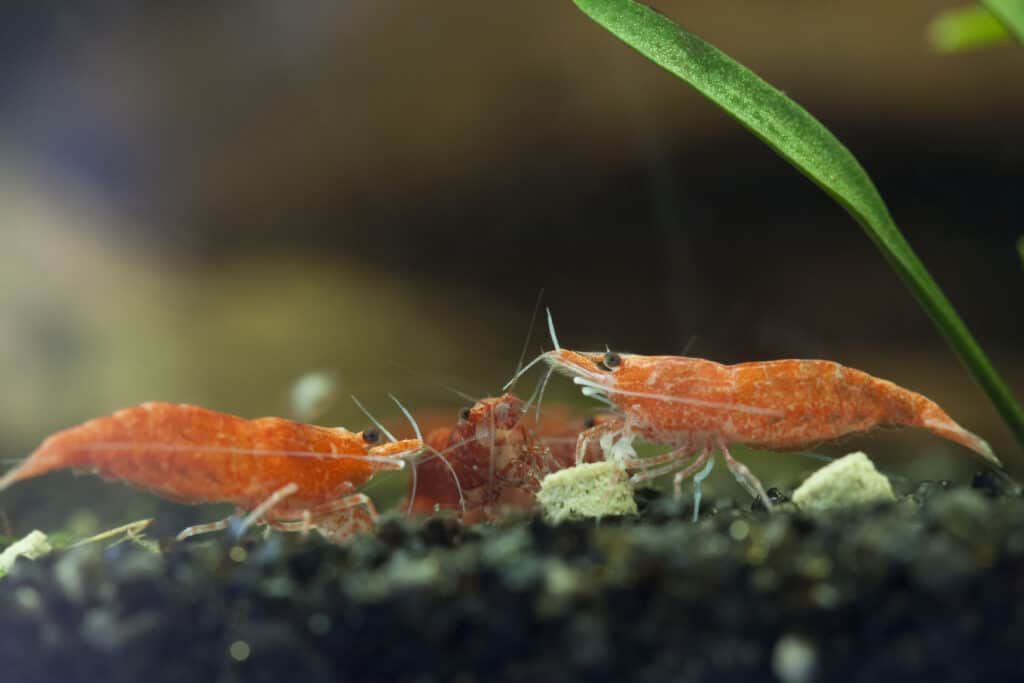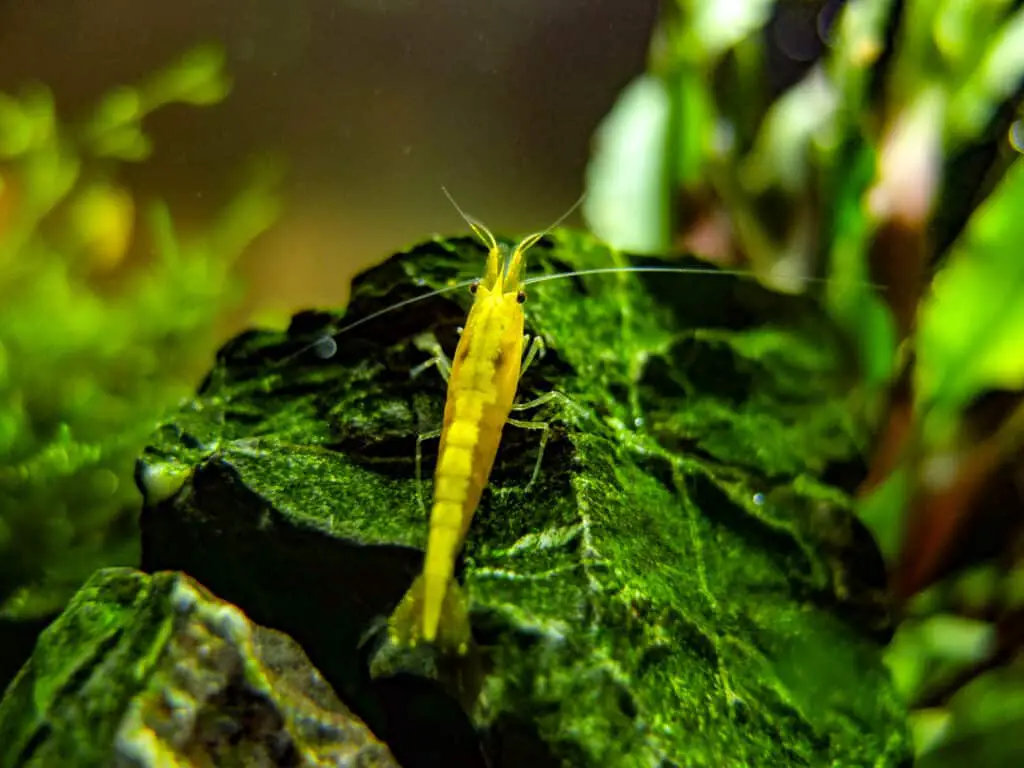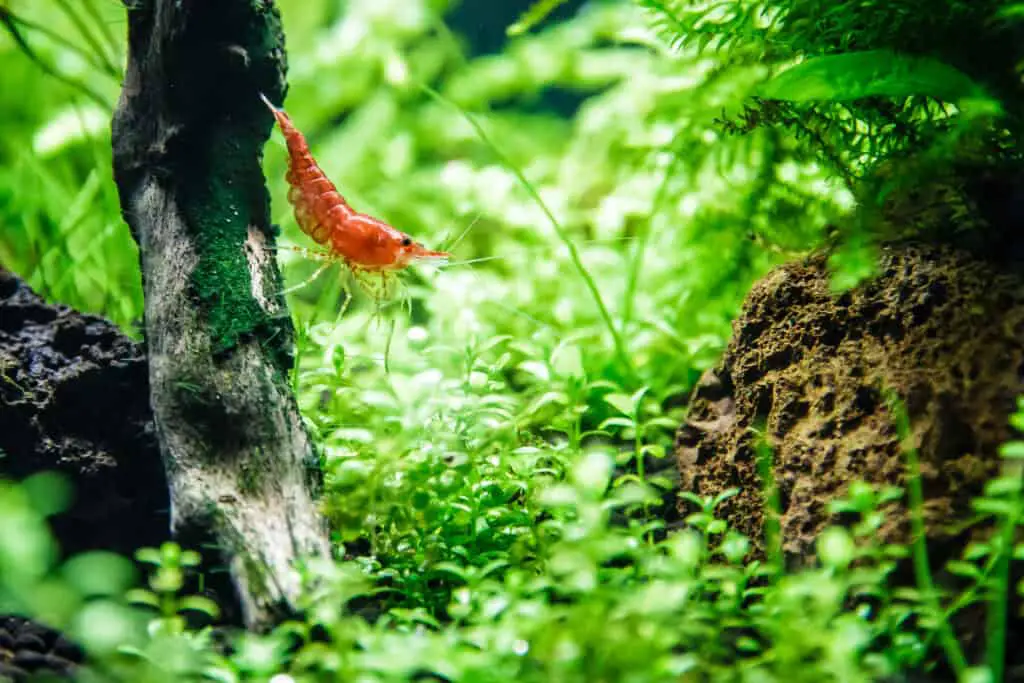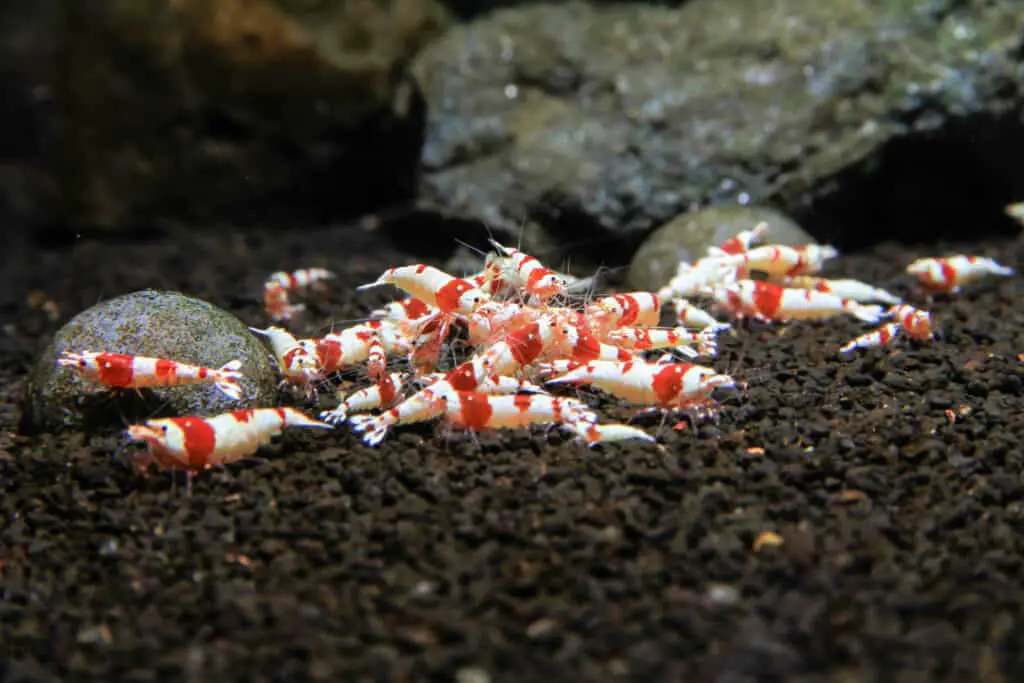
Freshwater shrimp have been a constant favorite for all members of the fish-keeping community.
Their tiny size, coupled with their color variations and active nature, makes them a compelling addition to any freshwater tank.
But as with any pet, there is a pressing question that is on everyone’s mind: How often should I feed my shrimp?
For most Freshwater shrimp, feeding daily is a great starting point.
Adjustments can then be made for each specific setup, taking into account the shrimp size, the number of shrimp, tank size, other tank inhabitants, and the amount of food being used during feeding.
Proper feeding is paramount in ensuring their health and longevity.
Let’s take a deep dive to give you the insights needed to properly feed your shrimp.

Feeding Frequency Recommendations
With a baseline of daily feeding, let’s look at the variables that would cause possible adjustments to it.
The size of Shrimp can have a big impact on the feeding frequency, as larger shrimp may require more food.
This can be achieved by either feeding multiple times or feeding more food during a feeding.
The size of the shrimp population will also be a determining factor, as more shrimp means a need for more food.
With a larger shrimp population, adding more food during a feeding may be beneficial, because it will lead to the food being more spread out.
Tank Size and Setup will factor into your feeding schedule because shrimp are natural scavengers and will eat most things.
Microfauna is an excellent natural food source for shrimp that will live in the substrate, decorations, rocks, plants, and other surfaces.
A larger tank provides more surfaces for these organisms to live and grow.
A live plant setup and the allowing of some algae growth will provide even more natural food resources as the shrimp can eat the algae and decaying plant matter.
These natural resources may provide you the ability to reduce the amount of supplemental feeding.
Tank Mates can provide both an increase and decrease in the needed frequency of feeding.
With additional fish and other invertebrates, food competition can be increased, resulting in less food being available to the shrimp who spend the majority of their time on the bottom of a tank.
The type of tank mate can also have an effect if they are predators of the shrimp.
In this case, the frequency of feeding may need to be increased, this is so the fish or other predators are fed first, reducing the risk of the fish going after the shrimp while they are feeding.
Benefits that can help reduce the frequency is the fact that shrimp will eat fish poop.
Daily feeding is still the recommended starting point for most shrimp.
From there you can take into account the specific setup, and other variables to determine if that frequency should be increased or decreased based on your situation.

Overfeeding Risks
A major problem that many shrimp keepers and people in the fish-keeping hobby, in general, have is overfeeding.
There is a common misconception that overfeeding shouldn’t be of concern and that a little extra food is harmless, but the results of this can cause exponential problems.
Like food that you and I eat, it will eventually begin to decay.
But unlike use where you can simply place that food into the trash, excess food in an aquarium just sits there.
This decaying food will lead to increased nitrite and ammonia levels, creating a toxic environment for all the inhabitants in your tank.
Because of this, you should be vigilant, especially when first gauging the frequency of feeding and the amount of food being used, to how much is left over after.
A good rule of thumb for this is to allow the food to stay in the tank for a few hours.
After this time has passed, you can remove any excess food.
If you notice that no food remains after this time, this could mean that you are experiencing another issue which is underfeeding.

Underfeeding Concerns
The complete opposite of overfeeding, underfeeding can also lead to many issues.
When viewing shrimp, it may seem like they are always eating, and in most cases, that is essentially what they are doing.
They have a consistent habitat of grazing on microfauna, biofilm, algae, and any other food source.
A constant lack of food can stop their growth, cause them to reproduce less, have them less energy, and eventually cause them to be less hardy, with shorter lifespans.
Another proponent of underfeeding can be from food competition with other tank mates.
Depending on the type of food being used, some of the food may never get in spots that are both accessible to the shrimp and where they feel safe.
Generally when feeding shrimp, one should look at using sinking food.
This allows the food to quickly move through the water column, reaching the bottom of the tank before other tank mates get ahold of it.
You may also try using blanched vegetables like zucchini and tying it to a rock, or other decor.
This can provide essential nutrients and help mimic varied diets they would encounter in nature.
That is why it is important to do a little bit of trial and error to find the perfect balance in the amount of food, the frequency of feeding, and the food being used to feed your shrimp.
Final Thoughts
Finding the perfect feeding schedule for shrimp is not all about following a rigid and exact plan.
It requires the ability to observe and make adjustments to find the perfect balance for all the variables your tank provides.
Be sure to adapt your feedings based on the monitoring of your shrimp, keeping in mind the amount of food left over, and looking at your tank’s water conditions.
Following this routine of observation will allow you to find the right balance for feeding, which will ensure a colorful, energetic, and healthy shrimp population is the highlight of your home aquarium.
